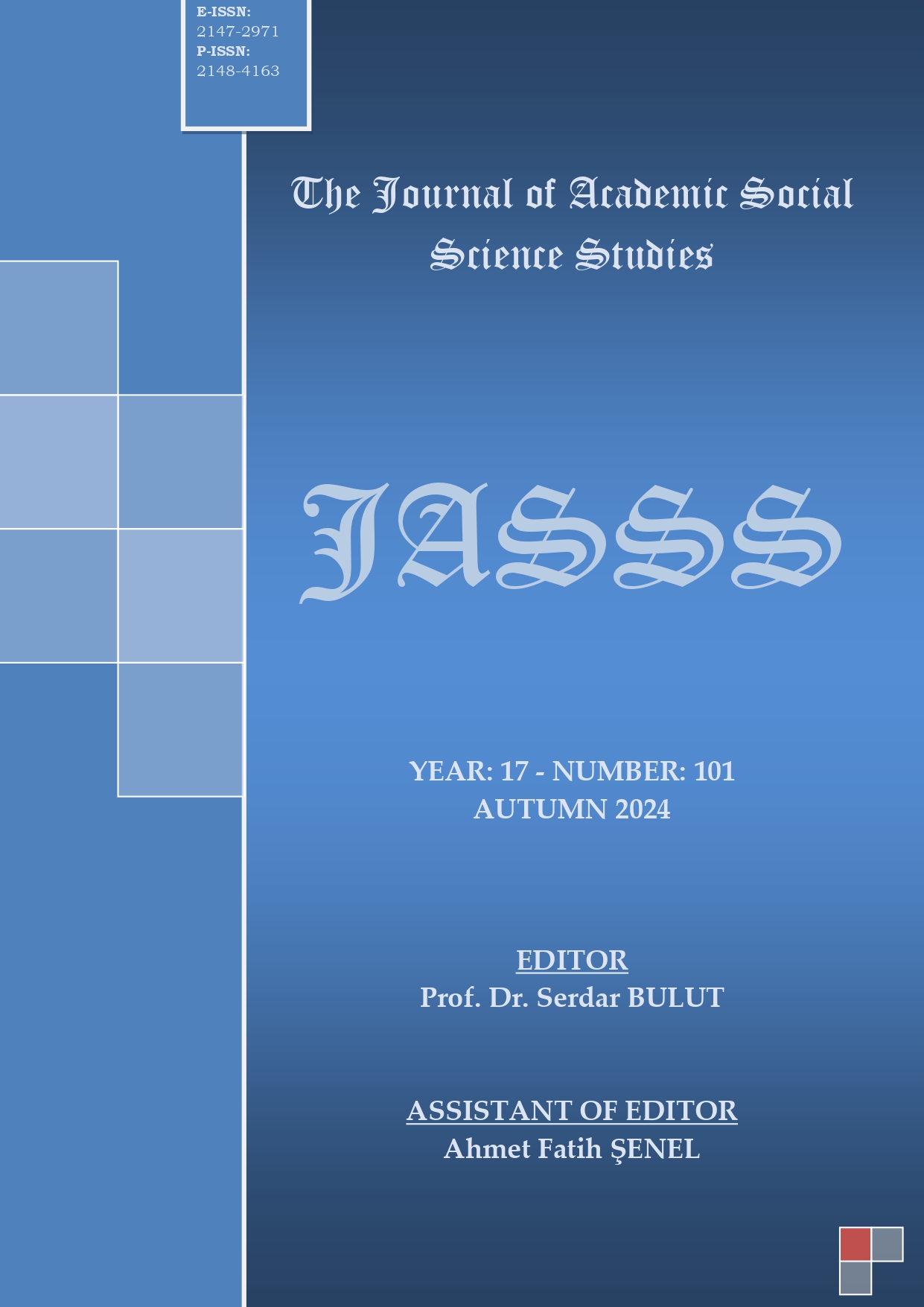Author :
Abstract
Osmanlı Devleti’nin Larende Sancağı’nın merkez kazası Karaman eski bir yerleşim alanı olup ticaret yollarının kesişim noktasında yer alıyordu. Şehir, ondokuzuncu yüzyılın ilk yarısında orta halli bir kent özelliği taşıyordu. Çarşı ve pazar olarak düzensiz olsa da hareketli olup şehirde arzı karşılayan birçok esnaf grubu vardı. Ülkenin her yerinde olduğu gibi Karaman’da da arz talep dengesi içerisinde toplumun huzurunu sağlamaya öncelik veren Osmanlı Devleti idarecileri, sosyal devlet ilkesinden hareketle temel gıda ve tüketim maddelerine yönelik narh adı verilen bir uygulama ile tavan fiyatı belirlerdi. Yıl içerisinde bahar ve kış başlangıcında iki kez narh konulmakla birlikte gerekli görüldüğü durumlarda uygulamanın sayısı artar ve duruma göre fiyat güncellenirdi. Narh, kadı başkanlığındaki esnafın da bulunduğu bir heyet tarafından konulup sicil defterlerine kaydedilerek esnaflara verilir ve halka duyurulurdu. Narh uygulaması ile bir malın üretim süreçlerindeki maliyetine göre fiyatı belirlenip hem üreticinin hem de tüketicinin zarar görmesi engellenirdi. Konulan narh çerçevesinde bir malın fiyatı ne ise ona uymak mecburiydi. Uymayanlar gerekli yaptırımlarla cezalandırılırlardı. Bu uygulama ile devlet hem halkın ihtiyacı ne ise alım gücü ölçüsünde temin etmelerine destek olur hem de piyasaya kaliteli mal sunulmasını sağlardı. Bu çerçevede Karaman Şer’iyye Sicil Defterlerinde yer alan narh kayıtlarına göre fiyatı belirlenen mallar ile bunların fiyat hareketlerini izlemek mümkün olduğu gibi fiyat hareketleri ile ilgili dalgalanmaları değerlendirmek de mümkündü.
Keywords
Abstract
Karaman, the central accident of Larende Sanjak of the Ottoman Empire, was an old settlement located at the intersection of trade routes. In the first half of the nineteenth century, the city had the characteristics of a middling city. Although the bazaar and market were irregular, they were lively and there were many tradesmen groups that met the supply in the city. The administrators of the Ottoman Empire, who prioritised ensuring the peace of the society within the supply and demand balance in Karaman, as in every part of the country, would set a ceiling price for basic food and consumer goods with a practice called narh, based on the principle of social state. Narh was set twice during the year at the beginning of spring and winter, but the number of applications was increased when deemed necessary and the price was updated according to the situation. Narh was set by a committee headed by the kadi and including the tradesmen, recorded in the registry books, given to the tradesmen and announced to the public. Narh was used to determine the price of a commodity according to its cost in the production process, thus preventing damage to both the producer and the consumer. It was obligatory to comply with the price of a commodity within the framework of the narh. Those who did not comply were penalised with the necessary sanctions. With this practice, the state would both support the people to procure whatever they needed within their purchasing power and ensure that quality goods were offered to the market. In this framework, it was possible to trace the goods whose prices were determined according to the narh records in the Karaman Shar'iyye Registry Books and their price movements, as well as to evaluate the fluctuations related to price movements.





